There are many different types of projects, but interestingly, they all have one thing in common. They all go through the same cycle, known as the project life cycle, project lifecycle or project management life cycle.
What Is the Project Life Cycle?
The project life cycle is various phases that a project goes through from inception to completion. It’s beneficial as it offers project managers a structured approach that helps with planning, execution and control. While there are many different versions of the project life cycle, the most common one is divided into five stages including initiation, planning, execution, monitoring and control and closure.
Who Manages the Project Life Cycle?
The project manager is usually responsible for managing the life cycle of a project. However, when an organization is executing multiple projects, there’s usually a project management office (PMO) involved, which consists of project managers, program managers and project portfolio managers, who collaborate to allocate organizational resources and effectively coordinate the efforts of employees.
It’s also important to note that there are other key roles throughout the project phases, such as the project sponsor, who leads the efforts of making a project proposal and presenting it to key stakeholders who approve the project and provide funding. In addition to them, there are also the project team members who execute the work.
The members of the project management team in charge of overseeing the project life cycle might vary depending on the size of the organization and the complexity of the project. However, every project management team needs project management software to manage the project phases.
ProjectManager is award-winning project management software equipped with tools to plan, schedule and track projects from start to finish. Create project schedules, allocate resources, estimate costs and monitor the status of projects with Gantt charts, real-time project dashboards, workload management charts and other online project management tools and features. Get started with ProjectManager for free today.
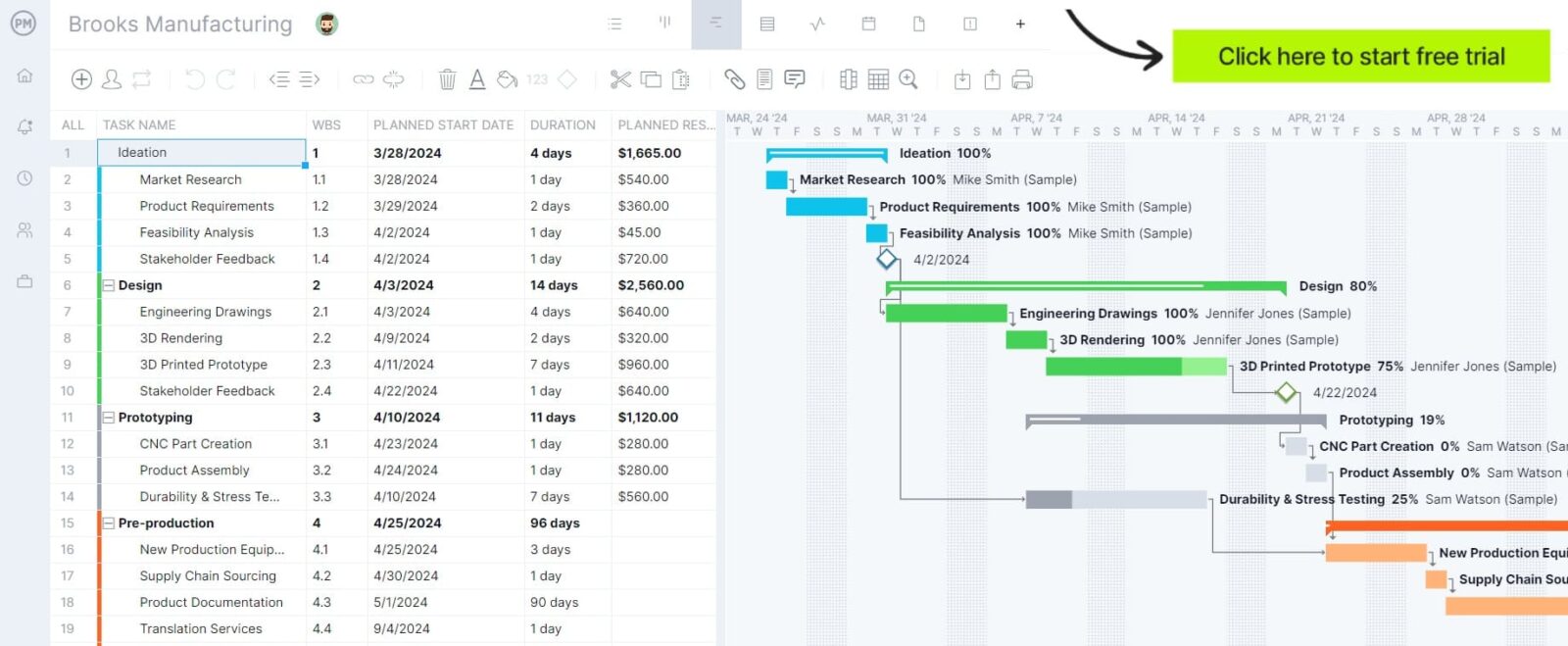
The 5 Phases of the Project Life Cycle
The project life cycle is made up of five project stages: project initiation, project planning, project execution, monitoring & control and project closing. Each of these phases is necessary for the effective delivery of the project.
Here’s a general description of the phases that make up the project life cycle and what can you do in each for successful project delivery. For example, you’ll need to produce important project documentation at each step in the process.
1. Project Initiation Phase
This is without a doubt one of the most important project phases, as this is when a project sponsor who advocates for a project idea starts gathering information to present a project proposal to a group of stakeholders who decide whether to move forward with the project or not.
This project stage usually begins with a business case, feasibility study, cost-benefit analysis and other types of research to determine whether the project is feasible and should or shouldn’t be undertaken. This is the start of the project for the project manager, who is appointed by the project sponsor and is responsible for defining the project at a high level and making a project charter along with the project sponsor.
Stakeholders provide input during this process too, and if the project charter is approved, a project team is assembled and a project kickoff meeting takes place. After this, the project manager begins making a project plan, which marks the start of the project planning phase.
After the project initiation, the project sponsor takes a secondary role throughout the remaining project phases while the project manager is responsible for overseeing the project planning, executing, monitoring and controlling and closing phases.
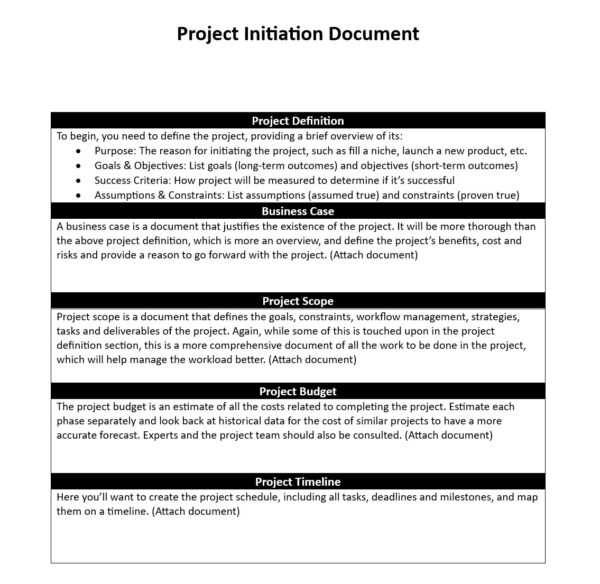
2. Project Planning Phase
In this stage of a project, the project plan is created by the project manager. The project plan, or project management plan is a document that explains in great detail how the project will be executed. While there are some guidelines for making project plans, such as those published by the project management institute (PMI) in the project management body of knowledge (PMBOK) or other organizations, project plans might vary from one organization to another.
However, any project management plan should cover these key areas:
- Project Goals: The project plan begins by setting SMART (specific, measurable, attainable, realistic, timely) goals. Project tasks and deliverables will be geared towards the completion of these goals.
- Project Scope Management: The term project scope refers to all the tasks that will be executed to complete a project. These are defined in a scope management plan, a subsection of the project plan that explains how tasks will be executed, what their outcomes or deliverables are and their success criteria, among many other important details.
- Project Stakeholder Management: This is the ongoing process of identifying, analyzing, planning, managing and tracking interactions with people or groups that may be impacted by the project’s success.
- Project Resource Management: This is how you make the best of your resources to achieve your project goals. It includes planning and allocating the people, equipment, materials and other assets.
- Project Budget Management: This is the process of making a project budget and planning, tracking and controlling a project’s financial resources.
- Project Schedule Management: This is about determining what task needs to be done at what point to ensure the project stays on schedule.
- Project Change Management: The process of guiding people through changes that could impact their roles within a project. It helps them adapt smoothly if there are changes such as new tasks, deadlines or processes.
- Project Risk Management: Identifying and dealing with potential problems that could impact your project. It aims to identify issues and minimize the impact should the risk come to fruition.
- Project Quality Management: This is about ensuring that the project delivers the right results while being mindful of the required quality standards and satisfying the customer.

3. Project Executing Phase
Now begins the phase of the project that most people think of as the project: executing the tasks, deliverables and milestones defined in the project plan.
Some tasks that make up the project execution phase include developing the team and assigning resources using key performance indicators, executing the project plan, procurement management and tracking and monitoring progress. If needed, you can set status meetings and revise the schedule and plan.
During this stage, it’s important to use project management software to manage project tasks, allocate resources, monitor costs and track key project metrics.
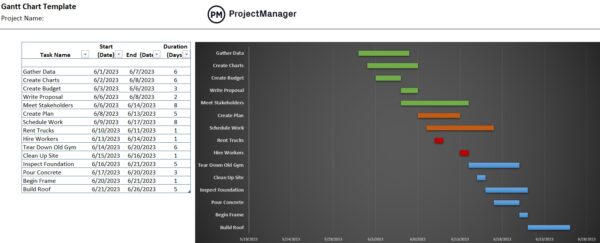
4. Project Monitoring and Controlling Phase
The project monitoring and controlling phase takes place simultaneously with the project execution phase and consists of setting up controls and key performance metrics to measure the effectiveness of the project execution.
Monitoring and controlling is one of the most important stages of project management to make sure the execution goes as planned.
To monitor projects effectively, project managers usually ensure these steps are taken:
- Create Project Baselines: The baseline is a fixed reference point that captures the original project plan, usually including the scope, schedule and cost baseline. It’s a helpful project boundary that determines how effectively the project is executed.
- Establish Project Metrics and Key Performance Indicators (KPIs): Next, determine what project metrics and KPIs need to be tracked. Common examples include schedule variance, cost variance, return on investment and more.
- Set Up Project Controls: Then, set up project controls, which are the processes, tools and techniques that help monitor a project. They include things such as schedule, cost, quality, scope and risk.
- Use Project Dashboards: These are essential tools for tracking various project metrics. They provide a visual representation of stats like cost, time, progress and more. Many project dashboards are customizable to show different metrics and some are portfolio dashboards that show data from across projects.
- Create Project Management Reports: Reports help share with project stakeholders as they are a fast and easy way to communicate updates. Project managers use customizable reports to share data on statuses, tasks, timesheets, workloads, variance and more.
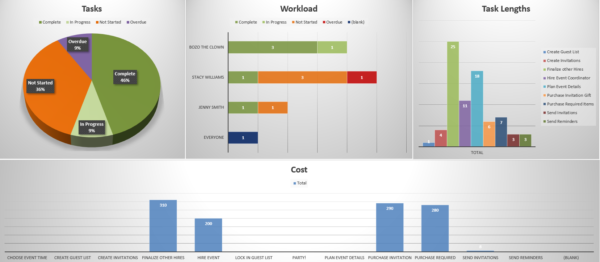
5. Project Closing Phase
The stages of project management need to be wrapped up, and the life cycle isn’t over until the project closure phase is over.
Completing the deliverables to the satisfaction of your stakeholders is key, of course, but the project manager must now disassemble the apparatus created to fulfill the project. That means closing out work with contractors, making sure everyone has been paid and ensuring that all project documents are signed off on and archived to help with planning future projects.
Once this project management life cycle phase has been done, the project manager often has a post-mortem meeting with the project team to highlight what worked and what didn’t work, so that successes can be repeated and mistakes avoided.
Based on the insights and key takeaways from this meeting, project managers will then create a lessons learned document, which logs the challenges, failures and successful outcomes from the project so that the project management team can learn from them for future projects.
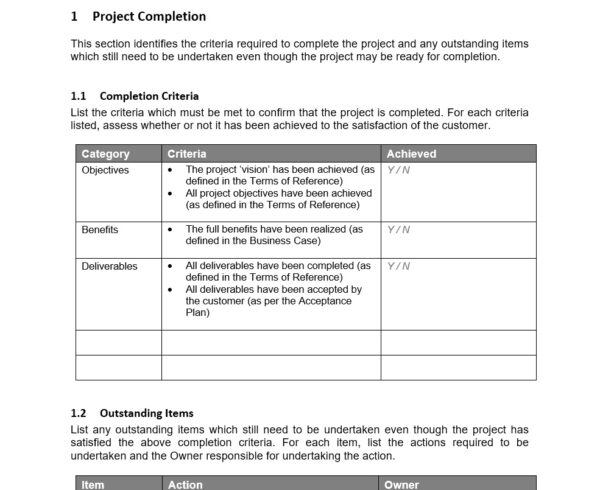
Understanding the Project Management Life Cycle
Jennifer Bridges, PMP, is our resident project management expert. She hosts hundreds of our training videos, including this one explaining the project management life cycle. Delve deeper into the project management phases by watching the video below.
How ProjectManager Helps Manage the Project Life Cycle
ProjectManager is a robust project management software that offers multiple project views and features for each step of the project management life cycle. Here are some of its key project management tools.
Plan, Schedule and Track with Gantt Charts
Our online Gantt chart helps you plan the project management phases, collecting your task list into a timeline. The duration for each task can then be set and each task assigned to a team member. Collaboration happens at the task level on the Gantt chart, where team members can comment and add relevant documents and images. They can even tag those not assigned to the task and they’ll be notified by email.
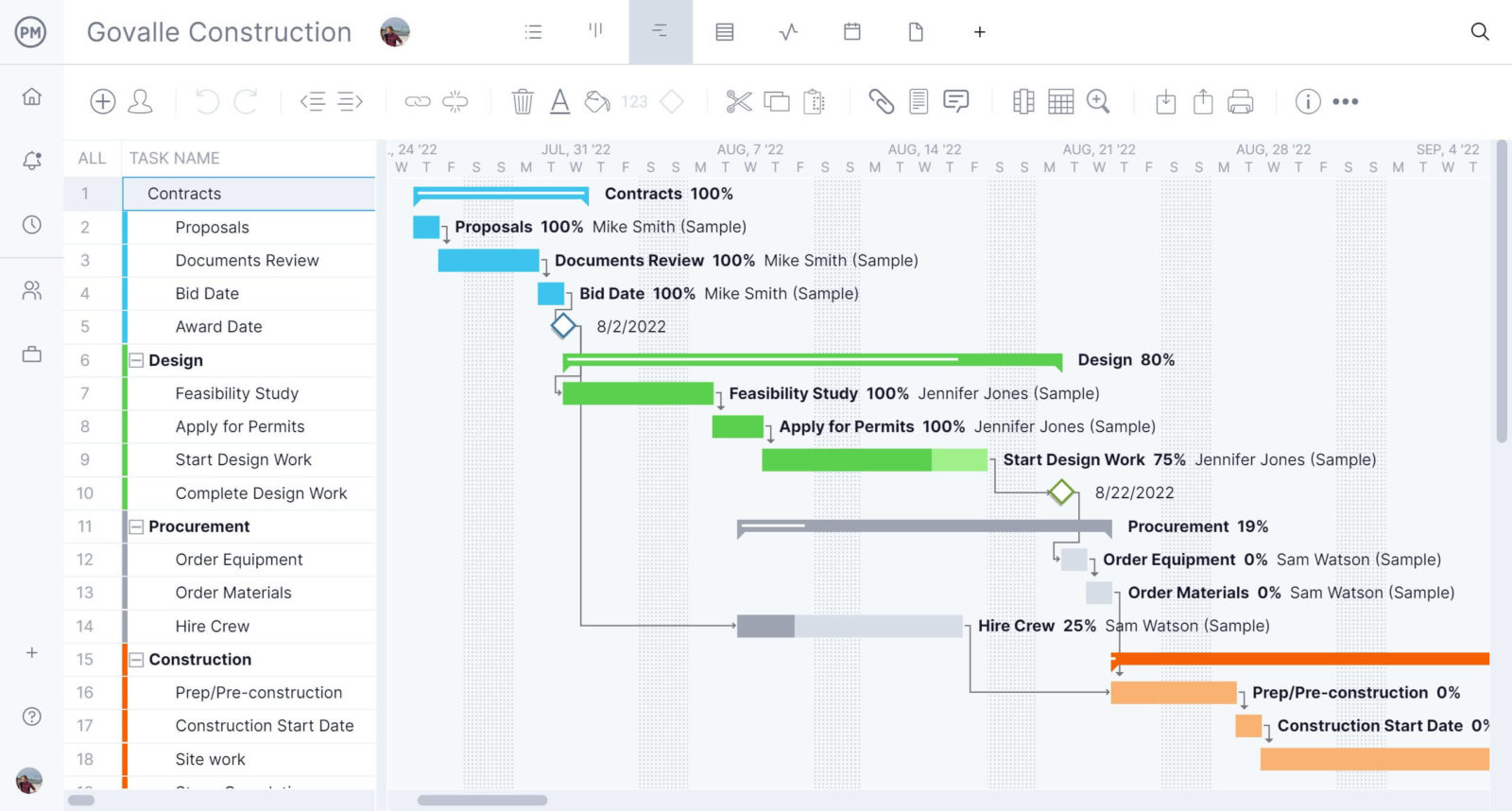
Multiple Project Management Tools
The Gantt chart is just one of ProjectManager’s project management views that outlines the stages of project management. You can also use the kanban view, dashboards, workload charts, timesheets and other tools. Use kanban boards to visualize the workflow, where cards represent the tasks, keeping team members focused on what they’re working on and project managers get a bird’s eye view. Resources can be reallocated and important dates, such as holidays and vacation days, are marked to know who can work when.
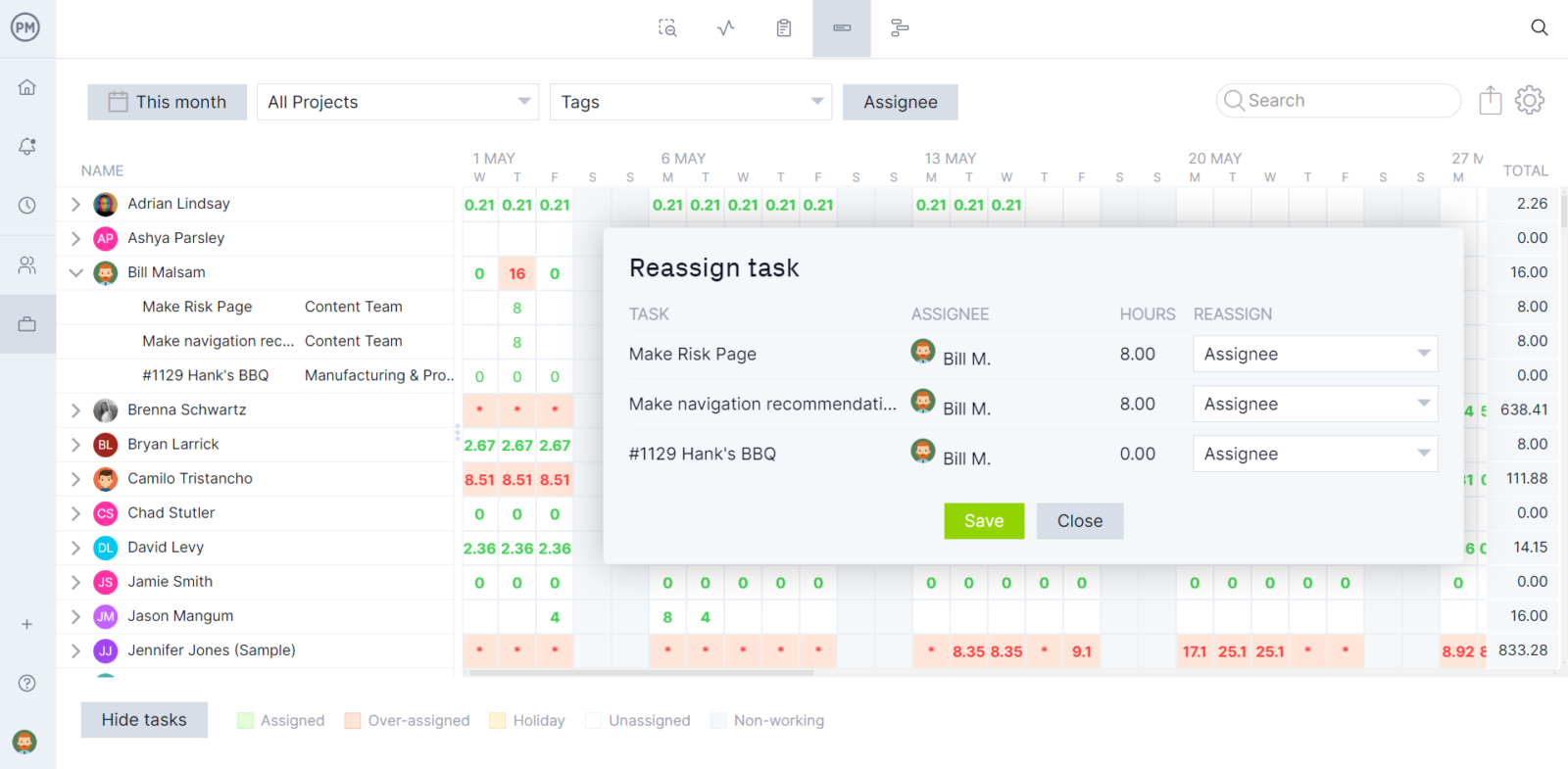
Create Project Reports in Minutes
One-click reporting gives project managers the data to present to stakeholders on various aspects of the project stages. These reports can be filtered to show the information you want and allow for deeper dives as necessary. The real-time dashboard shows project metrics in colorful and easy-to-read graphs and charts, giving you the most accurate picture of your project’s progress.
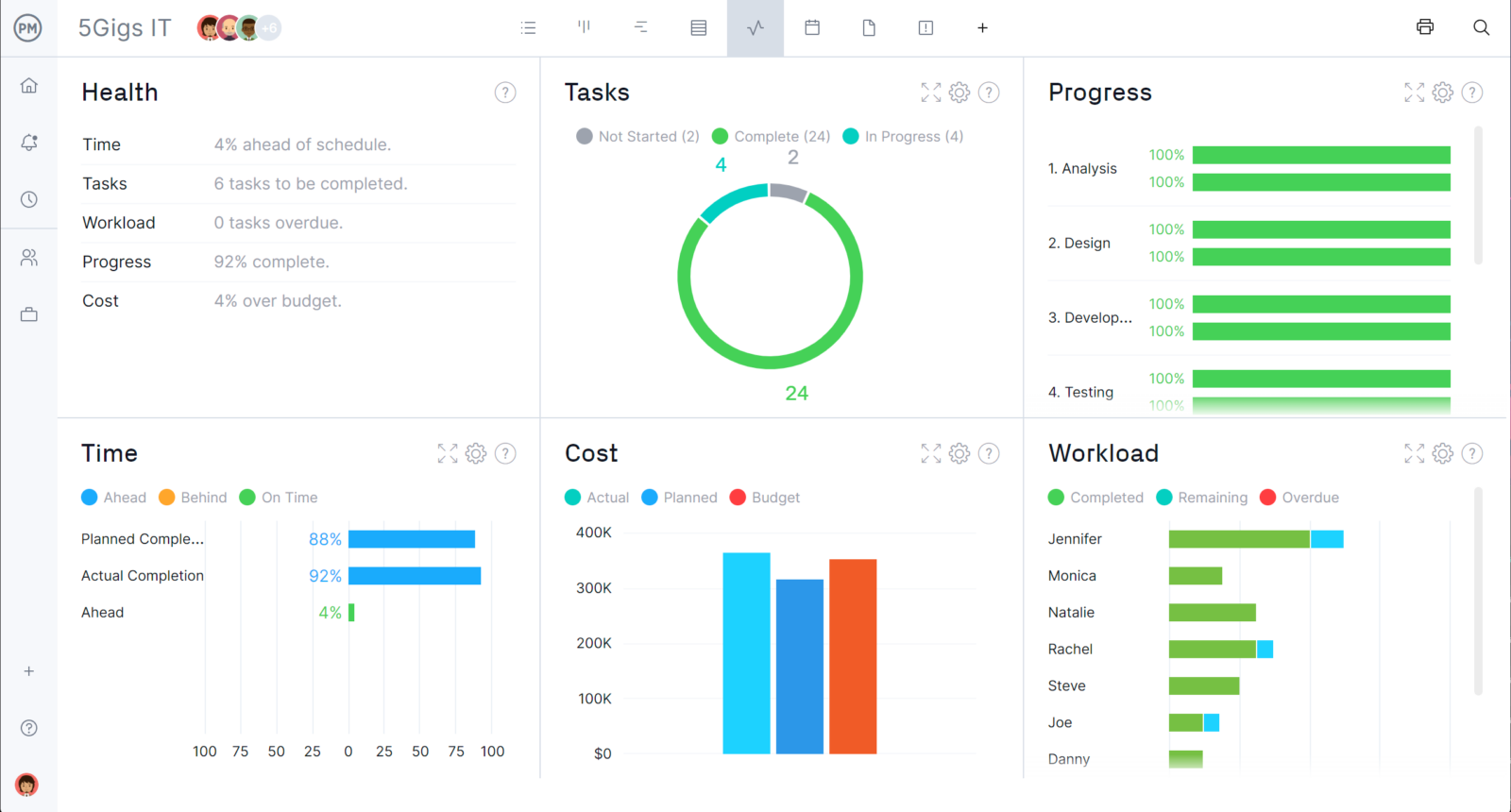
More Project Management Templates to Manage the Project Life Cycle
We have created dozens of project management templates to help project managers manage each phase of the project life cycle. Here are some of them.
Project Charter Template
The project charter is the main outcome of the project initiation phase. Our free project charter template is a great place to start building your project and get it approved by stakeholders.
Project Plan Template
A project plan is a thorough project management document that guides the project execution. Our free project plan template is fully customizable, so you can include what matters most to your project.
Project Budget Template
Our free project budget template is a great starting point to gather your project tasks, estimate their costs and create a basic project budget. However, if you truly want to use advanced project management features and have full control over your project portfolio, you should try ProjectManager.
Related Content
- Project Management: The Ultimate Guide
- Project Execution Strategies
- Project Initiation: How to Start Your Project Off Right
- 5 Steps to Project Closure (Checklist Included)
ProjectManager is award-winning project management solution that helps you in all aspects of project management. Online planning tools and web-based task management features let you collaborate on the go and make adjustments. Then, create comprehensive reports from the data with only a few clicks. Try it for yourself by taking this free 30-day trial today.

